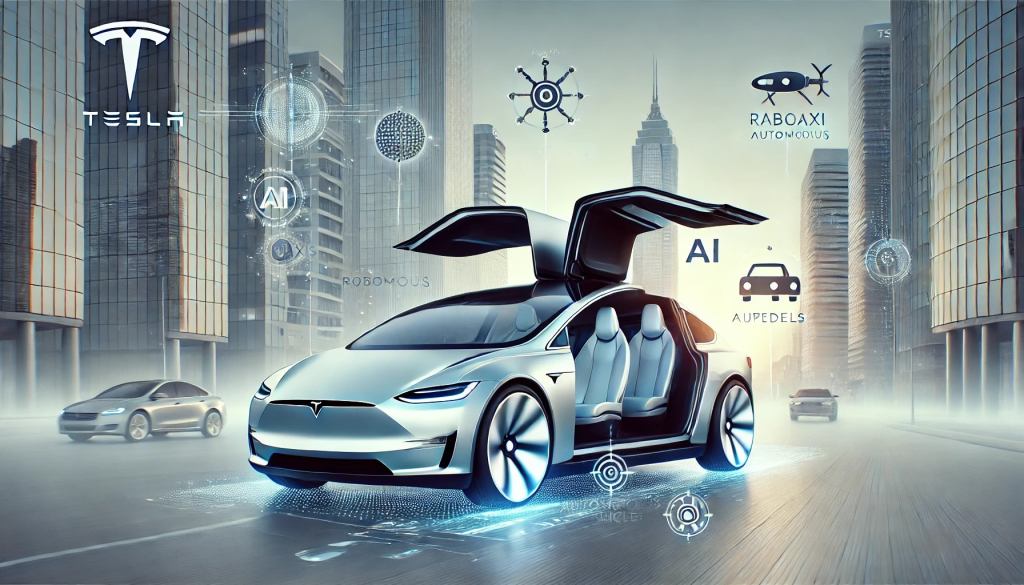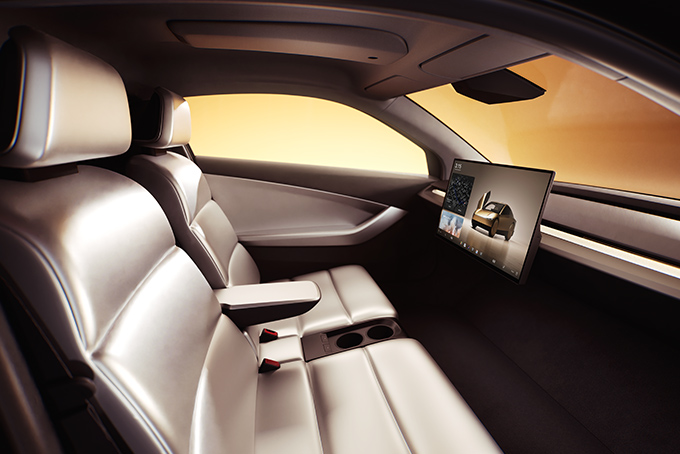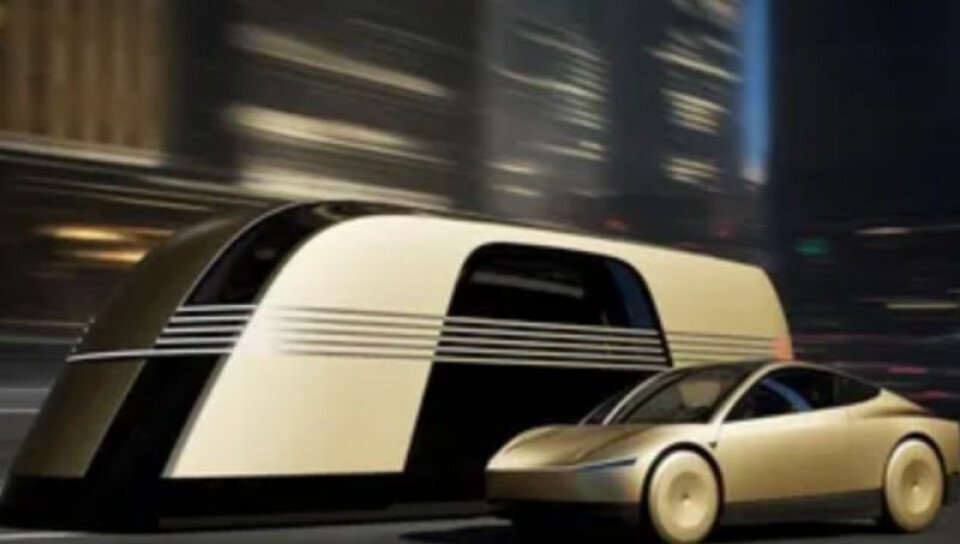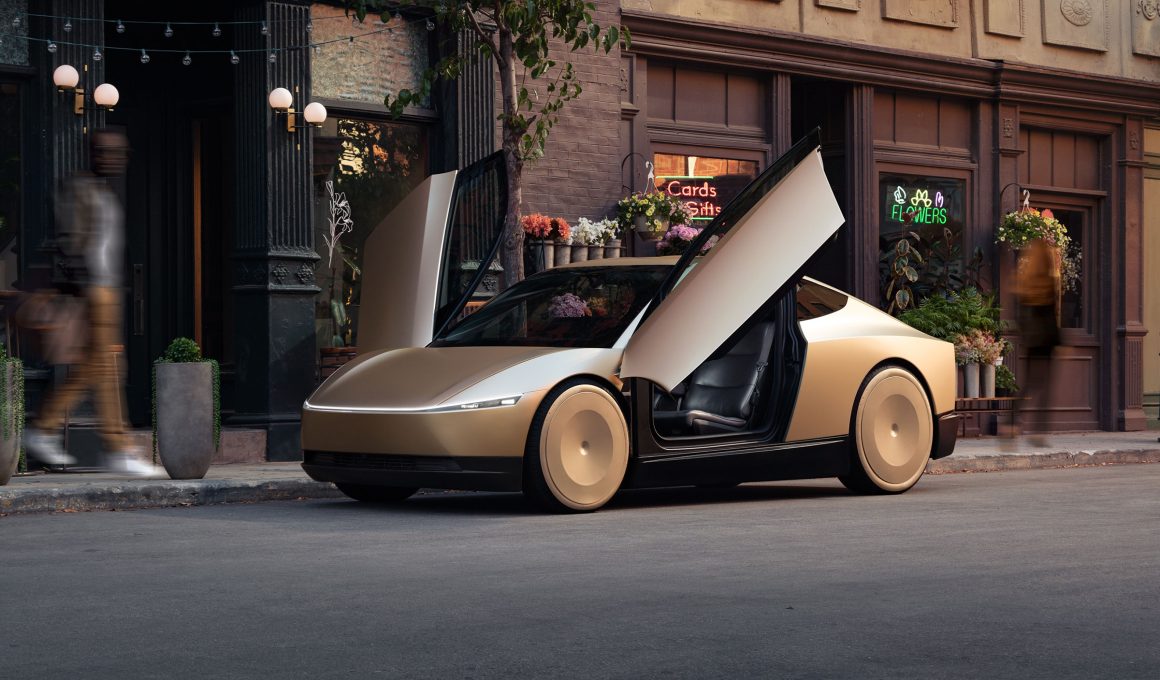Tesla, the trailblazer in electric vehicle technology, has once again captured the world’s attention with the unveiling of its latest innovation: a driverless robotaxi. Priced under $30,000, this new addition to Tesla’s lineup represents a monumental shift in the company’s strategy and the broader landscape of autonomous transportation. This article delves into the details of Tesla’s robotaxi, its potential impact on the market, and the future of autonomous vehicles.
The Unveiling Event
Tesla CEO Elon Musk took the stage at the company’s annual AI Day to introduce the world to the robotaxi. The event, held at Tesla’s headquarters in Palo Alto, California, was attended by industry experts, investors, and media from around the globe. Musk’s presentation highlighted the technological advancements and strategic vision behind the robotaxi, emphasizing its affordability and accessibility.
Musk began by showcasing the sleek design of the robotaxi, which combines Tesla’s signature aesthetics with practical features tailored for autonomous operation. He then delved into the technical specifications, revealing that the robotaxi is equipped with Tesla’s latest Full Self-Driving (FSD) software. This software, which has been rigorously tested and refined, enables the vehicle to navigate complex urban environments with ease.
One of the standout features of the robotaxi is its price point. At under $30,000, it is significantly more affordable than many existing electric vehicles, let alone autonomous ones. Musk explained that this pricing strategy is aimed at making autonomous transportation accessible to a broader audience, including ride-sharing companies, delivery services, and individual consumers. He emphasized that the cost savings are achieved through a combination of factors, including economies of scale, advancements in battery technology, and streamlined manufacturing processes.
The unveiling event also included a live demonstration of the robotaxi in action. Attendees watched as the vehicle seamlessly navigated a simulated urban environment, demonstrating its ability to handle various driving scenarios, from busy intersections to pedestrian crossings. The demonstration highlighted the robotaxi’s advanced sensor suite, which includes cameras, radar, and lidar, all working in harmony to provide a comprehensive view of the surroundings.
Musk concluded the presentation by outlining Tesla’s vision for the future of transportation. He spoke about the potential of autonomous vehicles to reduce traffic congestion, lower emissions, and improve road safety. He also hinted at future developments, including the integration of the robotaxi with Tesla’s existing ride-sharing platform, which could further revolutionize urban mobility.
Technological Innovations

The robotaxi is equipped with Tesla’s latest Full Self-Driving (FSD) software, which has undergone significant improvements over the past few years. The FSD system utilizes a combination of advanced sensors, cameras, and artificial intelligence to navigate complex urban environments without human intervention. Key features of the robotaxi include:
- Enhanced Autopilot: The robotaxi’s autopilot system is capable of handling a wide range of driving scenarios, from city streets to highways. It can recognize and respond to traffic signals, pedestrians, and other vehicles with remarkable accuracy.
- Redundant Safety Systems: To ensure passenger safety, the robotaxi is equipped with multiple layers of redundancy. This includes backup sensors, fail-safe mechanisms, and real-time monitoring by Tesla’s network operations center.
- Energy Efficiency: The robotaxi boasts an impressive range of over 300 miles on a single charge, thanks to Tesla’s latest battery technology. Its energy-efficient design reduces operational costs, making it an attractive option for fleet operators.
Affordability and Accessibility

One of the most striking aspects of Tesla’s robotaxi is its price point. At under $30,000, it is significantly more affordable than many existing electric vehicles, let alone autonomous ones. This pricing strategy is aimed at making autonomous transportation accessible to a broader audience, including ride-sharing companies, delivery services, and individual consumers.
Musk explained that the cost savings are achieved through a combination of factors, including economies of scale, advancements in battery technology, and streamlined manufacturing processes. By leveraging its existing infrastructure and expertise, Tesla is able to produce the robotaxi at a lower cost without compromising on quality or performance.
Market Impact
The introduction of Tesla’s robotaxi is poised to disrupt the transportation industry in several ways:
- Ride-Sharing Revolution: Companies like Uber and Lyft have long been exploring the potential of autonomous vehicles to reduce operational costs and improve efficiency. Tesla’s affordable robotaxi could accelerate the adoption of driverless ride-sharing services, leading to lower fares and increased availability.
- Logistics and Delivery: The logistics industry stands to benefit significantly from autonomous vehicles. Tesla’s robotaxi could be used for last-mile deliveries, reducing the need for human drivers and lowering delivery costs. This could lead to faster and more reliable delivery services for consumers.
- Urban Mobility: Autonomous vehicles have the potential to transform urban mobility by reducing traffic congestion and improving road safety. Tesla’s robotaxi, with its advanced navigation capabilities, could play a key role in creating smarter and more efficient cities.
Challenges and Considerations
While the robotaxi represents a major leap forward, there are several challenges and considerations that need to be addressed:
- Regulatory Hurdles: The deployment of autonomous vehicles is subject to stringent regulatory requirements. Tesla will need to work closely with government agencies to ensure compliance with safety standards and obtain necessary approvals.
- Public Perception: Despite advancements in technology, public trust in autonomous vehicles remains a significant barrier. Tesla will need to invest in public education and awareness campaigns to build confidence in the safety and reliability of its robotaxi.
- Infrastructure Development: The widespread adoption of autonomous vehicles will require significant investments in infrastructure, including charging stations, data networks, and smart traffic management systems. Collaboration between private companies and public authorities will be essential to support this transition.
The Future of Autonomous Transportation

Tesla’s robotaxi is more than just a new product; it represents a vision for the future of transportation. As autonomous technology continues to evolve, we can expect to see a shift towards more sustainable, efficient, and accessible mobility solutions. Here are some potential developments to watch for in the coming years:
- Integration with Public Transit: Autonomous vehicles could complement existing public transit systems by providing first-mile and last-mile connectivity. This could enhance the overall efficiency of urban transportation networks and reduce the reliance on private car ownership.
- Shared Mobility Ecosystems: The rise of autonomous vehicles could lead to the emergence of shared mobility ecosystems, where individuals and businesses share access to a fleet of driverless cars. This could reduce the number of vehicles on the road, lower emissions, and promote more sustainable transportation practices.
- Advancements in AI and Machine Learning: The continued development of AI and machine learning technologies will drive further improvements in autonomous vehicle performance. This includes better decision-making capabilities, enhanced safety features, and more efficient energy management.
Conclusion
Tesla’s unveiling of its driverless robotaxi marks a significant milestone in the journey towards autonomous transportation. With its affordable price, advanced technology, and potential to disrupt multiple industries, the robotaxi is set to play a pivotal role in shaping the future of mobility. As we move forward, it will be crucial to address the challenges and leverage the opportunities presented by this groundbreaking innovation.
The road ahead is filled with possibilities, and Tesla’s robotaxi is just the beginning. As we embrace this new era of transportation, we can look forward to a future where autonomous vehicles are an integral part of our daily lives, making travel safer, more efficient, and more accessible for everyone.

